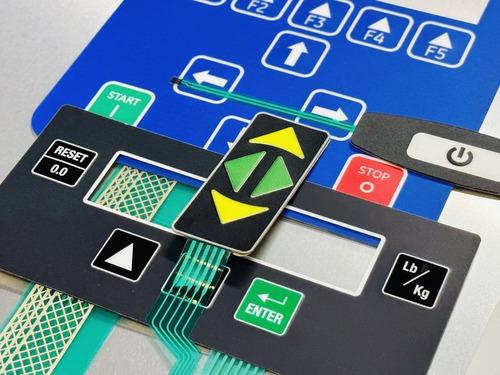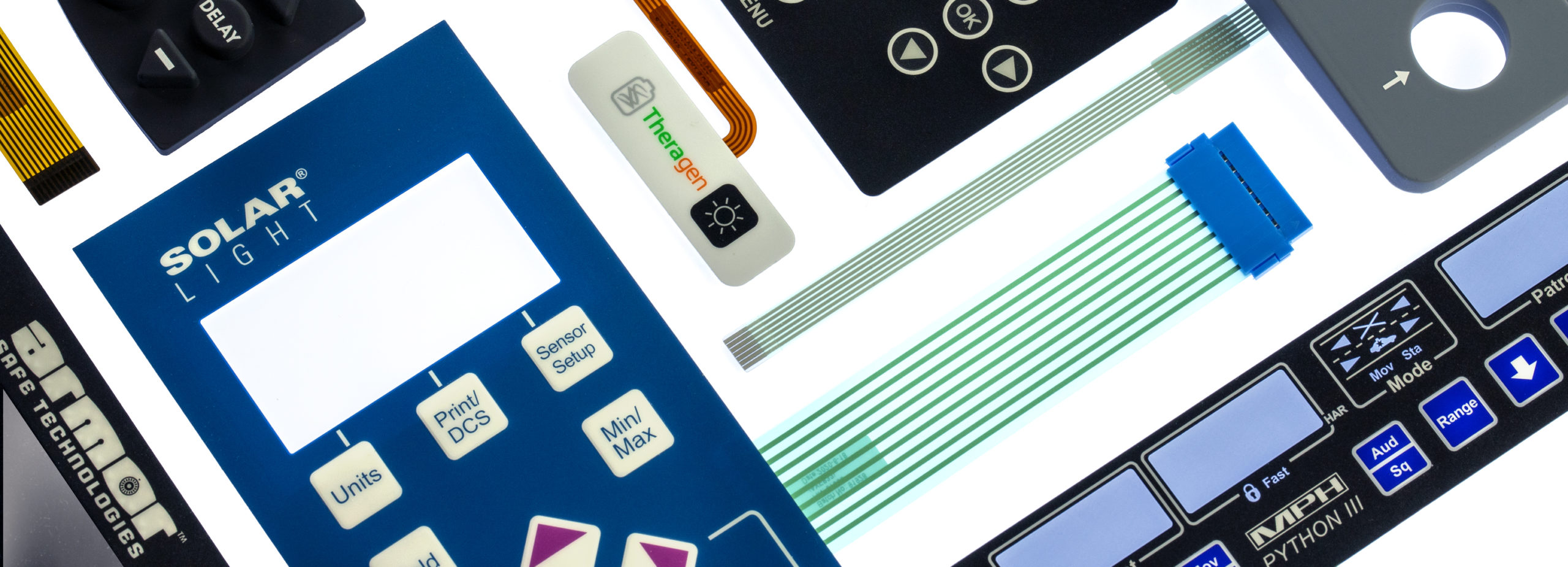Why Membrane Switches Are a Trustworthy Choice for Interface Solutions
Why Membrane Switches Are a Trustworthy Choice for Interface Solutions
Blog Article
The Ultimate Source on Membrane Layer Switches: Style, Functionality, and Applications
Membrane layer switches serve as an intriguing intersection of design and performance, playing a pivotal role in contemporary individual interfaces across various industries. This resource unloads the essential parts that add to their performance, including graphic overlays and circuit traces, while also elucidating the systems behind their stress activation. As we explore the diverse applications of membrane switches, it becomes noticeable that their versatility and longevity are critical in environments varying from healthcare to customer electronics. Nonetheless, the nuances of their layout and functional principles may reveal even much deeper insights worth taking into consideration.

Recognizing Membrane Layer Buttons
Membrane buttons are a kind of individual interface modern technology commonly utilized in different electronic gadgets, defined by their thin, flexible layout and performance. These switches are composed of several layers that consist of visuals overlays, sticky layers, and circuitry, allowing a efficient and portable interface for users. They can be discovered in home appliances, clinical gadgets, and industrial control panels, providing a reputable method for individual interaction.
Among the main advantages of membrane layer switches is their ability to withstand pollutants such as dirt and dampness, making them ideal for atmospheres where sturdiness is necessary. Their inconspicuous style enables smooth assimilation right into various applications, while the customizable graphic overlays boost individual experience by giving clear aesthetic comments. Additionally, membrane layer switches can accommodate a range of innovations, such as responsive responses and backlighting, additional boosting their functionality.
The production procedure for membrane layer switches over usually entails screen die-cutting, lamination, and printing methods, making sure accuracy and consistency in production. On the whole, membrane layer switches over represent a flexible and efficient solution for modern electronic tools, integrating capability with visual allure in interface layout.
Trick Elements and Style Aspects
A range of vital elements and layout elements come together to produce a reliable membrane layer switch. At the core, the graphic overlay offers both practical and aesthetic functions, using an user-friendly interface while shielding inner components from ecological aspects. The choice of materials, generally polyester or polycarbonate, affects longevity and tactile comments.
Under the overlay, the glue layer makes sure the button sticks securely to the substratum, which can be steel, plastic, or glass. The spacer layer is important, as it maintains the needed void between the overlay and the circuit layers, enabling for reliable actuation. Membrane Switches. Circuit traces, normally made from conductive ink or adhesive, are printed on a versatile substrate, making it possible for electric signals to be sent when stress is applied
Layout factors to consider also include the arrangement of tactile domes or embossing that supply physical comments to the user, improving the overall experience. In addition, the format and spacing of the switches should be maximized for simplicity of usage, ensuring that individuals can navigate the interface without effort. Generally, these parts and style components work synergistically to create a trusted, functional membrane button customized to specific applications.
Capability and Procedure Mechanism
At the heart of reliable capability for membrane layer changes exists their functional device, which assists in individual interaction through a straightforward yet effective design. These buttons run on the principle of pressure activation, where a customer uses force to a marked area of the button (Membrane Switches). This activity compresses the layers of the button, finishing an electric circuit that sends out a signal to the connected tool
The building typically includes a top graphic layer, a glue spacer layer, and a lower circuit layer, which collectively develop a durable user interface. When stress is applied, the leading layer falls down against the bottom circuit layer, allowing conductive traces to attach. This layout not only enables clear tactile comments yet also makes certain longevity and reliability, as the switches are typically immune to dust and dampness.
In addition, the convenience of membrane changes permits integration with various modern technologies, including LED indicators and microcontrollers, boosting their functionality. By offering a streamlined user interface that decreases mechanical wear, membrane switches over stay a popular option in applications ranging from customer electronics to commercial devices, ensuring ideal efficiency and individual satisfaction throughout varied atmospheres.
Kinds Of Membrane Layer Buttons

One more significant category is illuminated membrane buttons, which integrate backlighting to improve exposure in low-light problems. These buttons are typically made use of in control panels and dashboards where clear presence is essential.
Moreover, there are custom-made membrane switches made to fulfill certain dimensional, graphical, and practical requirements. These customizations can consist of special shapes, colors, and layouts, permitting smooth integration into different tools.

Applications Throughout Various Industries
Just how do membrane layer switches boost functionality across diverse industries? These flexible elements are indispensable to numerous applications, providing streamlined interface and robust efficiency. In the clinical sector, membrane switches play a critical duty in gadgets such as analysis devices and person surveillance systems, where integrity and convenience of cleaning are vital. Their capability to withstand harsh environments makes them optimal for research laboratory instruments and surgical devices.
In the vehicle sector, membrane layer buttons are typically utilized in control panels and control board, giving intuitive controls that boost vehicle driver safety and benefit. The consumer electronics sector additionally takes advantage of their adjustable and light-weight attributes, making it possible for sleek layouts for mobile phones and home appliances.
Furthermore, membrane layer switches locate applications in commercial automation, where they contribute to effective equipment operation and tracking systems. Their resistance to dirt and dampness guarantees functionality in requiring conditions (Membrane Switches). Additionally, the food and drink sector utilizes membrane layer buttons for tools control, where hygiene and toughness are essential
Verdict
In final thought, membrane switches over stand for an essential innovation in individual interface innovation, characterized by their distinct style and performance. The flexibility of membrane layer switches over facilitates their application throughout diverse sectors, from clinical devices to customer electronic devices.
Membrane layer changes serve as an appealing intersection of style and performance, playing an essential duty in modern individual interfaces across numerous sectors.Membrane buttons are a type of user interface technology extensively utilized in different digital tools, identified by their slim, flexible design and capability.At the heart of effective functionality for membrane layer changes lies their functional device, which facilitates individual interaction with a basic yet efficient style. These buttons run on the concept of stress activation, where a Go Here user applies force to a designated area of the button.In final thought, membrane changes stand for an important innovation in user interface innovation, identified by their special layout and capability.
Report this page